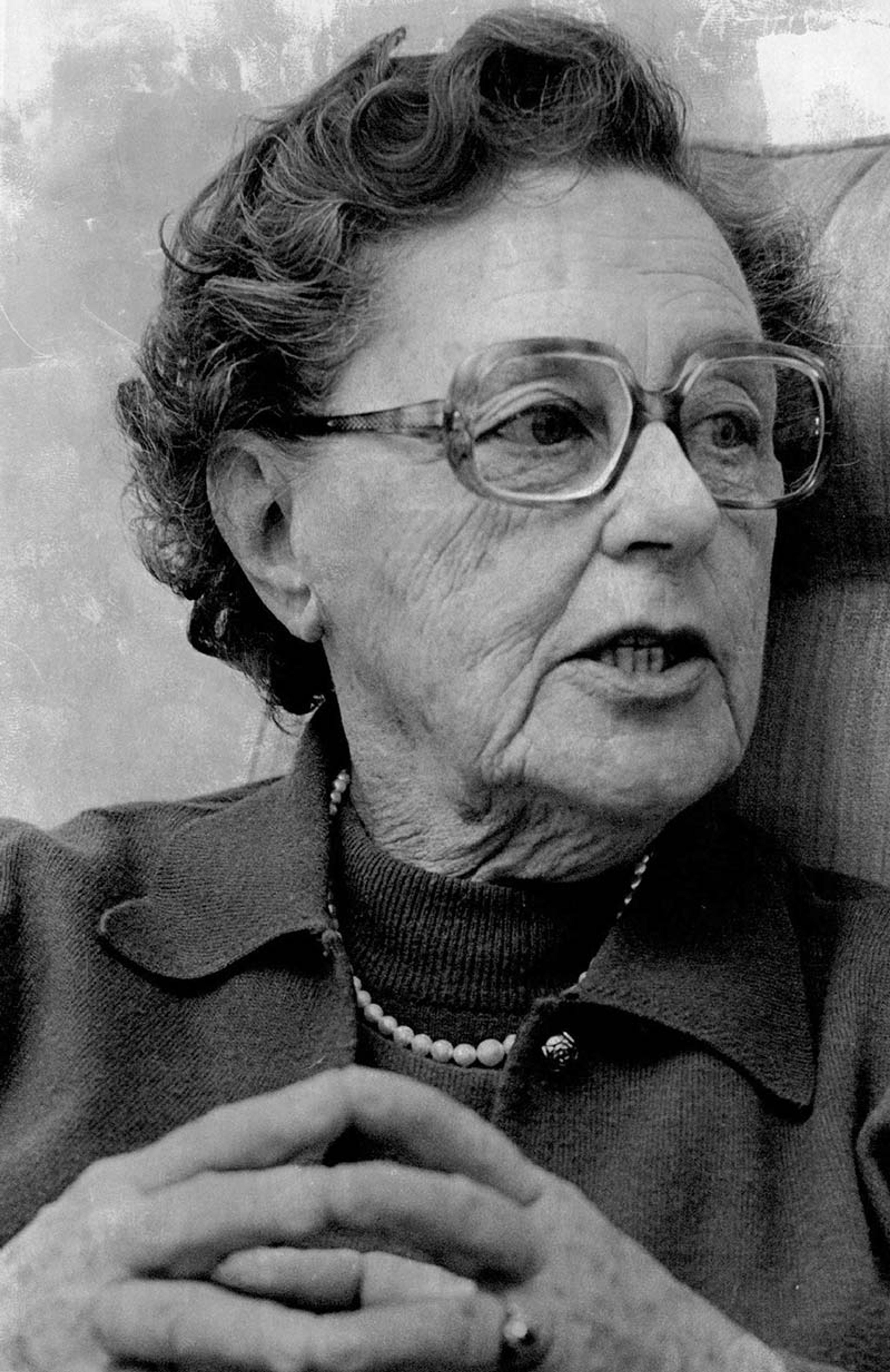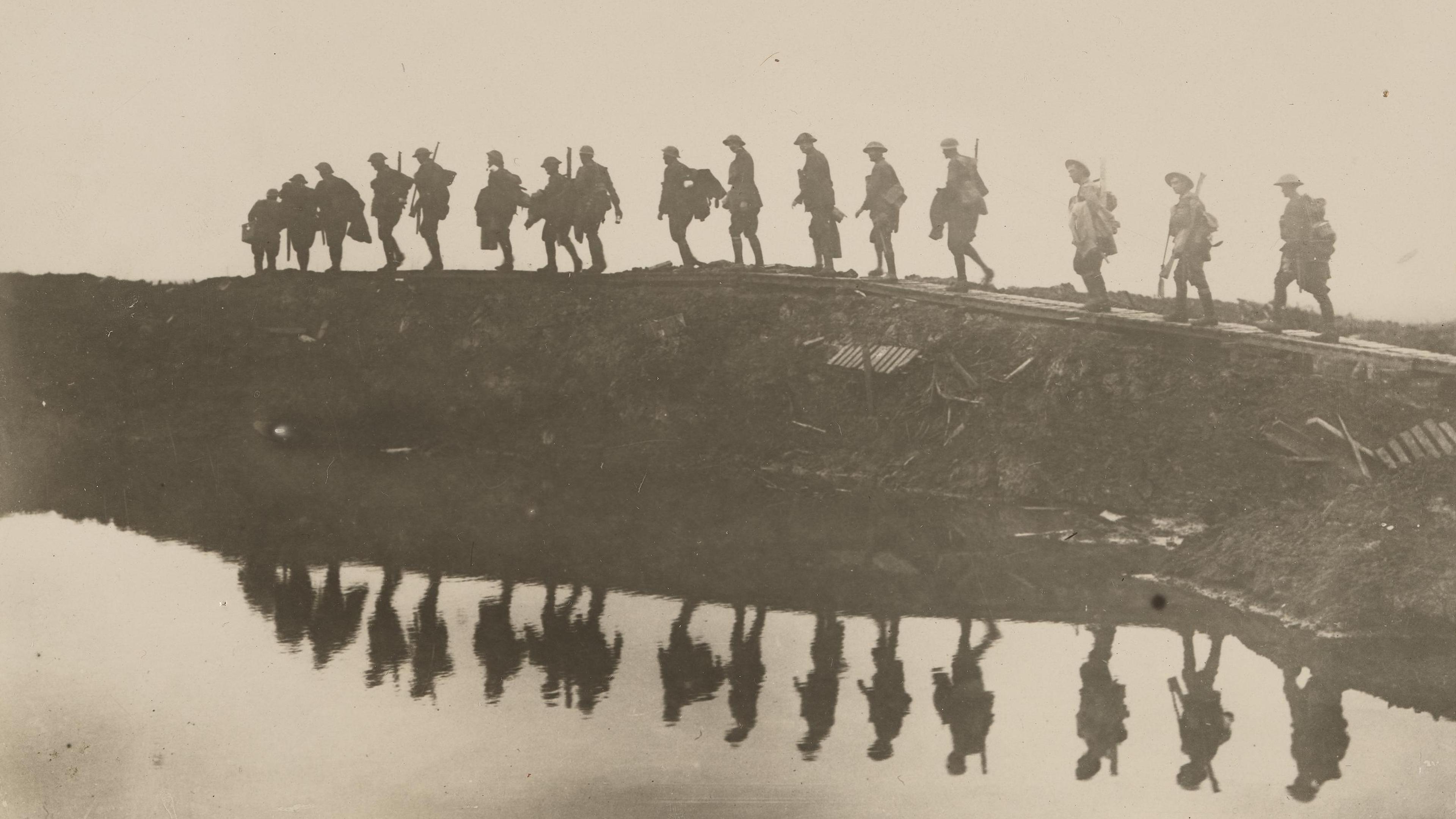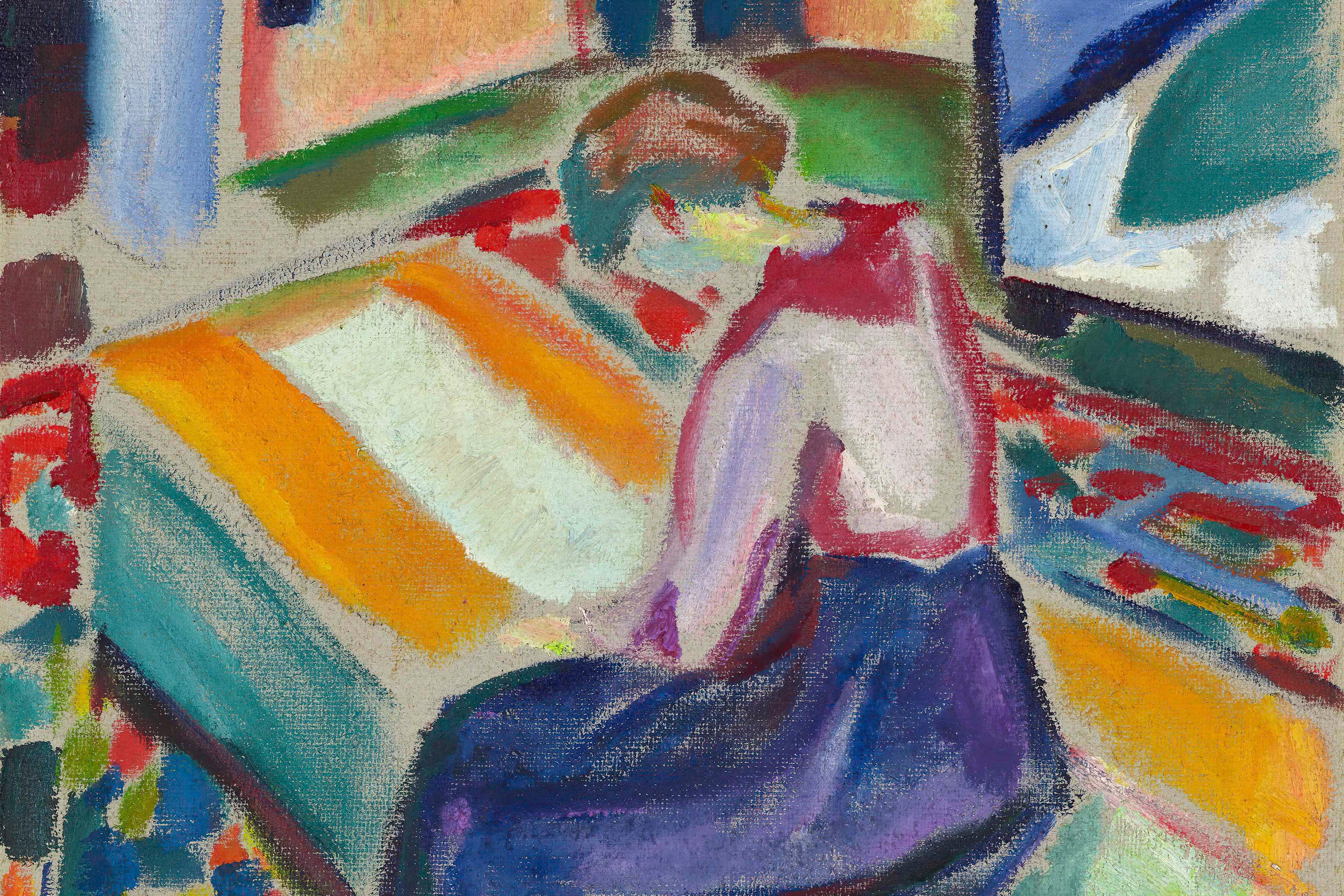Imagine being in a pandemic, isolated and inert. Your life feels out of control, and you are stressed, not sleeping well. Then a raft of bewildering new symptoms arrive – perhaps your heart races unexpectedly, or you feel lightheaded. Maybe your stomach churns and parts of your body seem to have an alarming life of their own, all insisting something is badly wrong. You are less afraid of the pandemic than of the person you have now become.
Most terrifying of all is the invasive flashes of fear in the absence of any specific threat.
Back in 1927, this was 24-year-old Claire Weekes. A brilliant young scholar on her way to becoming the first woman to attain a doctorate of science at the University of Sydney, Weekes had developed an infection of the tonsils, lost weight and started having heart palpitations. Her local doctor, with scant evidence, concluded that she had the dreaded disease of the day, tuberculosis, and she was shunted off to a sanatorium outside the city.
‘I thought I was dying,’ she recalled in a letter to a friend.
Enforced idleness and isolation left her ruminating on the still unexplained palpitations, amplifying her general distress. Upon discharge after six months, she felt worse than when she went in. What had become of the normal, happy young woman she was not so long ago?

Dr Claire Weekes photographed in 1977. Photo by Denver Post/Getty
Flash forward to 1962 and the 59-year-old Dr Claire Weekes was working as a general practitioner, having retrained in medicine after an earlier stellar career in science during which she earned an international reputation in evolutionary biology. That year she also wrote her first book, the global bestseller Self-Help for Your Nerves.
The book was born from the furnace of the two years of high anxiety Weekes had endured in her 20s. Back then, her saviour came in the form of a soldier friend who had fought in the First World War. He explained how shellshocked soldiers had been programmed by fear and suffered similar physical symptoms to her own. Her heart continued to race, he told her, because she was frightened of it. Don’t fight the fear, he advised her, but try to ‘float’ past it. For Weekes, this was a revelation and a huge relief. She took his advice and recovered quite quickly.
The bitter experience of her youth – buttressed by her studies in biology, the nervous system and medicine – contributed to her becoming a doctor deeply attentive to her anxious patients. Weekes soon found herself in huge demand. Her phone rang day and night. Other doctors came to recognise her gift for treating what she called ‘nervous illness’ and sent her more patients.
Critical of Freudian psychoanalysis with its emphasis on sex and tracking down the original cause of distress through talk therapy, Weekes boasted of getting patients off ‘the old Viennese couch … [and out] into the world’. She believed that fear was the driver of much nervous suffering, and that many had simply been ‘tricked by their nerves’. An original cause certainly needed attention if it was still fuelling distress, but Weekes discerned that often it took second place to people’s fear of ‘the state they were in’.
Weekes exposed fear’s vast menu of bewildering and distressing symptoms, and became famous for explaining the mind-body connection. People recognised themselves in the words she used, borrowed from her patients: ‘All tied up.’ ‘Headaches.’ ‘Tired and weary.’ ‘Palpitations.’ ‘Dreadful.’ ‘Nervous.’ ‘Sharp pain under the heart.’ ‘No interest.’ ‘Restless.’ ‘My heart beats like lead.’ ‘I have a heavy lump of dough in my stomach.’ ‘Heart-shakes.’ The nervous system seemed infinitely inventive. Then, bewilderment and fear of ‘what happens next’ took over.
Yet far from being possessed or crazy, Weekes explained to her readers that they were ordinary people who could cure themselves once they understood how their nerves had been ‘sensitised’ and then, by following some simple steps, learn to control the savage flame of fear. ‘It is very much an illness of your attitude to fear,’ she counselled in Peace from Nervous Suffering (1972).
It is survival mode, that automatic instinct that means you duck a falling brick or a punch without thought
Weekes was effectively treating the panic attack before it even had a name. She also believed that fear is the common thread that runs through many different psychological ‘disorders’, such as obsessive-compulsive disorder (OCD), phobias, general anxiety disorder, depression and post-traumatic stress disorder (PTSD), to use the formal diagnostic terms that had yet to be invented in her time. In this sense, Weekes anticipated contemporary ‘transdiagnostic’ approaches to mental health that acknowledge the commonalities across supposedly separate disorders. Weekes credited her scientific training with allowing her to see what she called ‘the trunk of the tree’ rather than being distracted by the branches.
In the 1930s, the US president Franklin Roosevelt memorably observed that ‘the only thing we have to fear is fear itself’. This concept is at the heart of Weekes’s unique work. ‘[Th]e nervous person must understand that when he panics, he feels not one fear, as he supposes, but two separate fears. I call these the first and second fear,’ she wrote in 1972.
Five years later, in her address to the Association for the Advancement of Psychotherapy, Weekes explained that the first fear is easy to identify. It is survival mode, that automatic instinct that means you duck a falling brick or a punch without thought. You don’t have to think. The body thinks for you. Today it would be called by its shorthand ‘fight, flight or freeze’. In what she calls a ‘sensitised’ person – someone who has been ill, burdened by worry or, say, fought in the trenches – it can come out of the blue, and be electric in its swiftness and ‘so out of proportion to the danger causing it’ that ‘it cannot be readily dismissed’.
So, shaken badly by this random jolt of first fear, the sufferer inevitably adds ‘second fear’ by worrying about this inexplicably alarming moment. Weekes said that the second fear could be recognised by its prefix ‘Oh my goodness!’ or ‘What if?’ to which any imaginings can be added. This kickstarts the fear-adrenaline-fear cycle, in which heart palpitations, among a medley of other symptoms, play such a powerful part. A circuit-breaker was required. The one she picked was the one she learned from her friend, the soldier: don’t fight fear.
Weekes distilled her understanding of ‘nervous illness’ into a six-word mantra for overcoming anxiety: face, accept, float, let time pass. In Self-Help for Your Nerves, she said that sufferers usually spent their time counterproductively:
Running away, not facing.
Fighting, not accepting.
Arresting and ‘listening in’, not floating past.
Being impatient with time, not letting time pass.
The nervously ill person usually notices each new symptom in alarm, listens-in in apprehension, and yet at the same time is afraid to examine that too closely for fear he will make it worse. He agitatedly seeks occupation to try to force forgetfulness. This is running away, not facing.
He may try to cope with the unwelcome feelings by tensing himself against them, thinking: ‘I must not let this get the better of me!’ He is fighting, not accepting and floating.
Also he keeps looking back and worrying because so much time has passed and he is not yet cured, as if there is an evil spirit which could be exorcised if only he, or the doctor knew how to do it. He is impatient with time; not willing to let time pass.
Of all those words ‘accept’ or, as she would later explain in notes in the margin, ‘don’t fight’, was fundamental. For it was only with such acceptance that this first uncontrollable fear, the primitive fight-or-flight alarm, which was now being triggered in inappropriate circumstances, could be disabled. It was not just ‘putting up with’ the distress. The objective was to yield entirely to first fear, allow it to burn itself out without adding the fuel of second fear.
I am showing you what nature will do if you give her a chance
Weekes set out the science behind her method. Her mantra, with its echoes of Eastern mysticism, was in fact an invitation to the parasympathetic nervous system to do its job and bring the body back into what professionals would call homeostasis, and what the rest of us would understand as peace.
‘There is no such thing as Dr Weekes’s method,’ she said in her second book. ‘I teach nature’s method. I am showing you what nature will do if you give her a chance.’ She found a huge grateful public, and four more books followed the first. Her advice worked for people who were suicidal as well as for over-stressed individuals.
Weekes found a hungry audience but the mental health professionals of her day were indifferent, or worse. This was painful for Weekes, who was conscious of her academic achievements. One leading Australian specialist admitted to me he had originally regarded her book as the equivalent of ‘advice from grandma’. He recanted years later, acknowledging her pioneering work. Few others conceded the point. To them, Weekes was writing about ‘nerves’ which didn’t sound very modern. Worse, she was writing popular self-help books.
However, the biology of fear and the role of the nervous system are back in fashion now. In a recent interview about emotional regulation, Allan Schore, a neuropsychologist at the University of California, Los Angeles, declared: ‘It’s all about the autonomic nervous system,’ which he noted was ignored for ‘much of the last century’. Today, fear has found its way to the front of the queue as a driver of mental distress and trauma. Brain plasticity has also gained popular currency – and what was Weekes’s emphasis on ‘acceptance’ other than a version of retraining the brain out of its habitual responses?
Her approach to anxiety, grounded in an understanding of neurophysiology, remains fresh
The notion of ‘acceptance’ has found an unassailable place in modern treatment. It even has its own banner – acceptance and commitment therapy (ACT) – recognised as part of the so-called third wave of cognitive behavioural therapy. The founder of ACT, Steven Hayes, describes acceptance as ‘facing the monster’ and ‘walking towards it’ and, like Weekes, he believes it is a necessary step on the path to freedom from distressing symptoms. The prescience of Weekes’s approach also extends to the contemporary understanding of chronic pain, in which fighting physical pain is recognised as being as counterproductive as fighting mental pain.
Weekes was convinced she was ahead of her time and, decades after her death, her approach to anxiety, grounded in an understanding of neurophysiology, remains fresh. For instance, in the 1990s, the US psychiatrist Stephen Porges coined the influential polyvagal theory, which describes the neurophysiological basis of sensitisation to fear. Later, another psychiatrist, Bessel van der Kolk in his bestseller The Body Keeps the Score (2014), recognised the physiology of trauma.
Echoes of Weekes’s approach can also be found in the writings of the US neuroscientist Joseph LeDoux, who makes a crucial distinction between the system in the brain that detects and responds to threats – the fight, flight or freeze mechanism (where evolution does the thinking, as he puts it) – and the system that generates conscious feelings of fear.
Although Weekes was largely ignored by psychiatry and psychology in her lifetime, the reading public educated the medical professionals about what worked for them. And through her books and public engagements, Weekes slowly and invisibly pioneered a change in the treatment of anxiety that continues to this day.
It wasn’t until late in her life that Weekes revealed what many had intuited from her books, that she had personal experience of high anxiety. Her public version was that she was instantly cured when her soldier friend explained to her the deranging effects of fear. It was not quite as simple as that – her ‘nerves’ returned more than once. But Weekes also wrote powerfully about the importance of not being discouraged by such ‘setbacks’ – she knew they were often part of recovery and to be embraced as a chance to practise acceptance. She practised what she preached and that rapidly beating heart, so frightening in her 20s, was to beat on for another 60 years. Just before she died aged 87 in 1990, Weekes told her eldest niece that her work would still be relevant in 50 years. To this day, her bestselling books are still in print, helping in exactly the same way as when they were first published.








